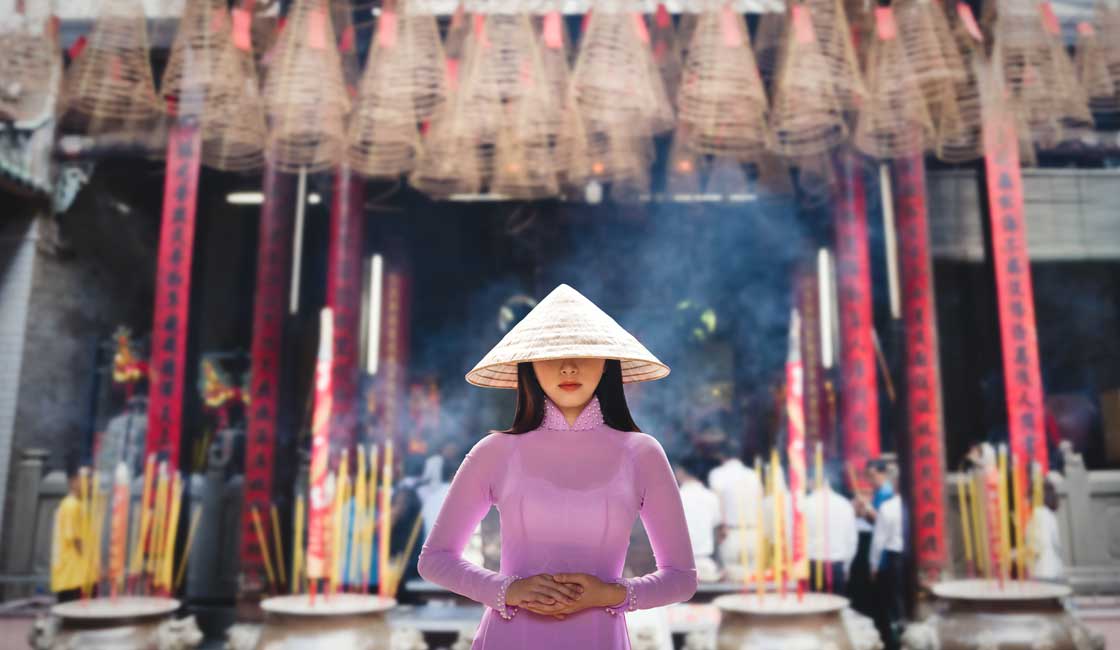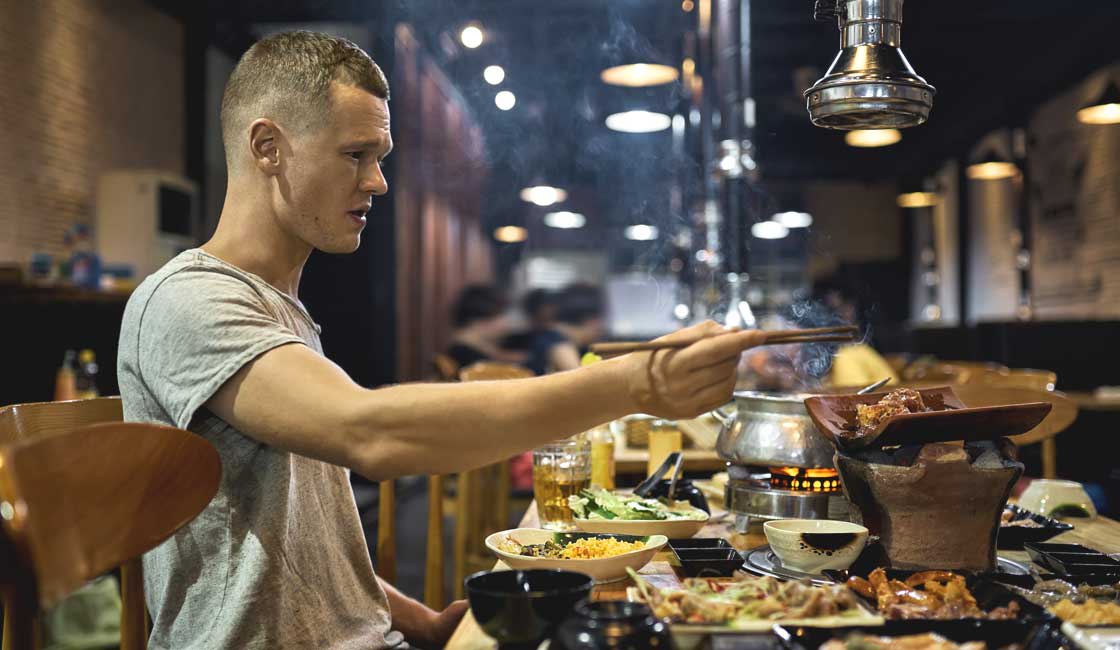
Vietnam has been open to tourism for a long time, and over the years the citizens have seen all kinds of behavior, so anything goes, right? Not quite. Not at all in fact. Despite the increasing awareness of the “Western” ways of living, especially with the growing number of expats who now live in the country’s big cities, Vietnamese culture is very complex and deeply rooted in tradition and etiquette in Vietnam can be quite different from what travelers are used to.
Certain behaviors that can be taken for granted in the West are just not acceptable in Southeast Asia and Vietnamese society. Although a tourist may be forgiven for their ignorance, visitors are typically expected to obey the basic rules of good manners. To help those planning a trip to Vietnam, our resident expert has kindly put together a shortlist of her top 5 rules for Vietnamese etiquette – an invaluable “good manners” guide to help you avoid embarrassing faux pas and make a great first impression with the locals.

Smile
The Vietnamese come across as very kind and gentle people, mostly because there are smiles everywhere around. There is a palpable peace in people and to the unaware, it may look like their lives are trouble-free, even if they are anything but. As such, travelers should be aware that there are several rules that come with this “smile culture”:
Be sure to smile back. Smile before you speak and after you speak. Smile at the people by the sidewalks, street vendors, and waiters. Smile even when something is wrong. In Vietnam, you are supposed to smile under any circumstances.
In Asia time has a different meaning than in the West. The service is slower (there is no rule about your coffee being ready in just a couple of minutes) and buses do not always depart on time. People never seem to be in a hurry. Give yourself the luxury of not rushing too. You will be more in tune with the locals and maybe even find some peace in it.
Even if things are taking longer than you had hoped, do not display your anger or impatience. Raising your voice or losing your temper is always seen as bad manners. Take it easy, even if you think something is wrong. Smile first. Losing your temper never brings solutions but results in a loss of respect by the locals. Moreover, it can cause “losing face“, and that is even worse.
The concept of “loss of face” in Asian culture is hard to comprehend for many foreigners. But the visible social face is extremely important, and may well be the most important element of Asian culture.
As an example, losing face happens when one has to admit a lack of knowledge or expertise in something, or one has their mistakes exposed for all to see. You would not want to be the cause of someone’s loss of face, therefore refrain from pointing out the mistakes of others. Try making a public compliment instead!
In a similar vein, showing off in any way isn’t welcome. Make sure that you don’t expose big sums of money. By being humble in Asia you earn the highest respect of everybody. Being loud and very jovial is at many times uncomfortable for others.

A family
Respect, above all else, holds the highest value in Vietnamese etiquette. It is present in all aspects of life and there are multiple rules that everybody follows. Knowing about some of them will help you understand a little about how the Vietnamese see the world. Here are the most important dos and don’ts when it comes to respecting:
Your age matters and it’s ok. Social status in Vietnam is measured by age and position. Therefore do not be surprised or offended when asked about your age or your job. It is needed to show you respect.
In Vietnamese, as in all Asian languages, the form “you” is not in use. The locals address each other as younger or older sister/brother, uncle, grandpa, and so on. Even close friends will call each other “younger sister” or “older brother”. This is just as natural as we may address a person 20 years our senior by name in the West.
Make sure that you always speak with reverence when talking to the elders and that you allow the younger people to address you in an appropriately respectful manner.
It is a friendly gesture in many western countries to touch an arm or the shoulder of another person. When traveling to Asia, not only in Vietnam, don’t do it! Most importantly, never touch anyone’s head. Do not touch women and always wait for them to extend their hand first for a handshake.
Anyone who has ever seen a chipmunk will know they always hold their nuts with both hands. Similarly, in Vietnam when handing anything to anyone (like money to the cashier) do so by using both hands. Especially if it’s your business card – hand it over with both hands and take a little bow.
If you do find yourself only using one hand, you can rectify the situation a little by touching your elbow with the other hand to be more respectful.
Let’s face it, it would be weird if it was the other way around. You will be asked to take your shoes off on so many occasions so a good tip is to wear those slip-on sandals that are easy to put on and take off. You will take your shoes off when entering temples, homes, sometimes even stores or cafes.
The Vietnamese are quite open about their outfits, and there are no real requirements about what and how to wear. However, when you enter a temple, make sure that your arms and knees are covered. In the big cities, it’s not uncommon to see Vietnamese ladies wear slightly revealing clothes to dinners or cocktail parties, but in the rural areas, you might want to dress conservatively and swap those shorts for more respectful long pants.

Sharing a meal
With the mouthwatering Vietnamese food, you will be spending quite some time at a table! It’s a common practice in Asia that meals are served in family style. Waiters are even used to just bringing just one menu to the table, as it is understood that the choice will be made for everyone to share and be ordered by one person. So now you are sitting at the table, what next? Here are our top tips for mealtime manners in Vietnam:
Note that If you are not comfortable using chopsticks, you may ask for a fork, but be aware that many restaurants will not have a knife.
Vietnam is as lovely as it can be culturally shocking, in many aspects. It has guarded its traditions for centuries and its culture is complex and multilayered. Whatever circumstance you find yourself in and no matter what happens, smiling and kindness are always great ways to make meaningful connections on your visit.
While Rainforest Cruises aim to provide accurate and up-to-date information, we make no representations as to the accuracy or completeness of any information herein or found by following any link on this site. Rainforest Cruises cannot and will not accept responsibility for any omissions or inaccuracies, or for any consequences arising therefrom, including any losses, injuries, or damages resulting from the display or use of this information.




